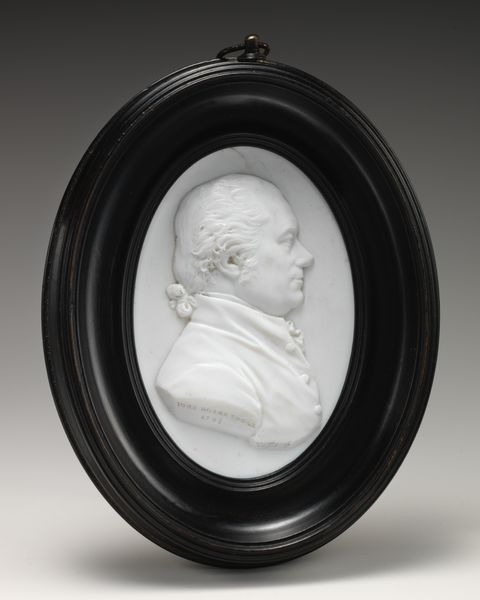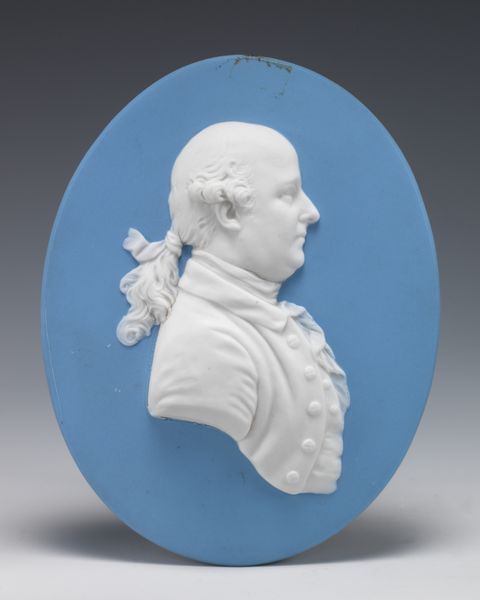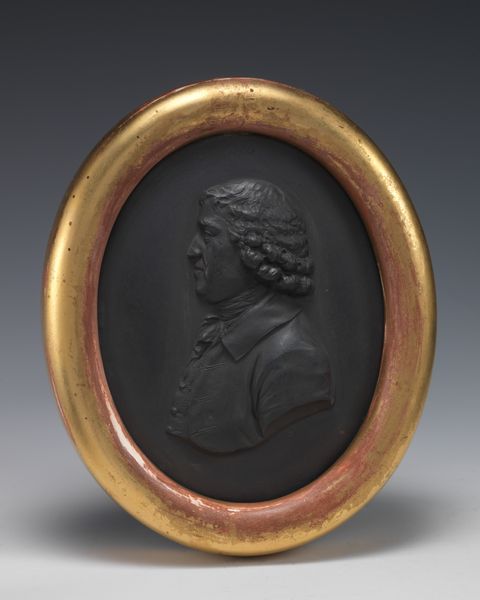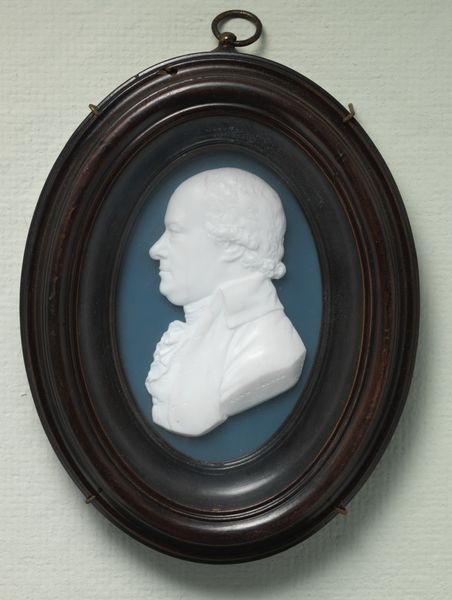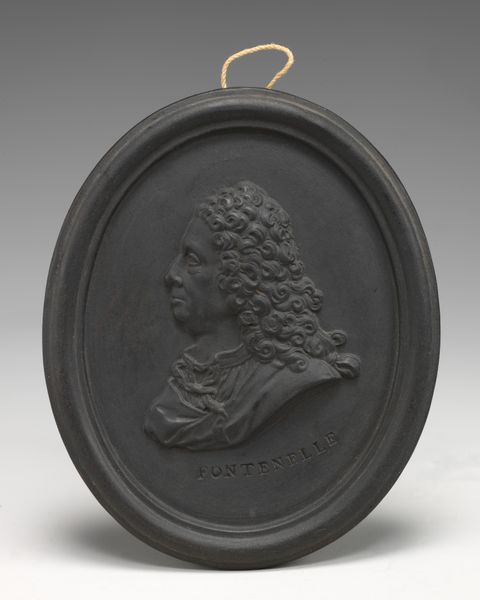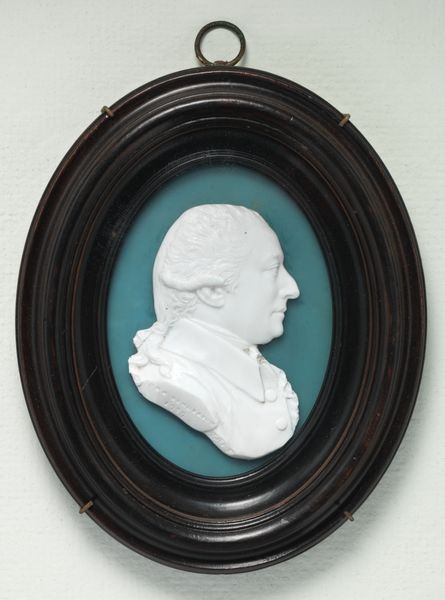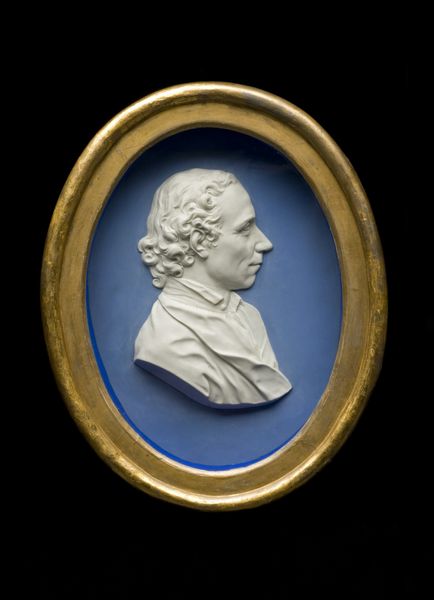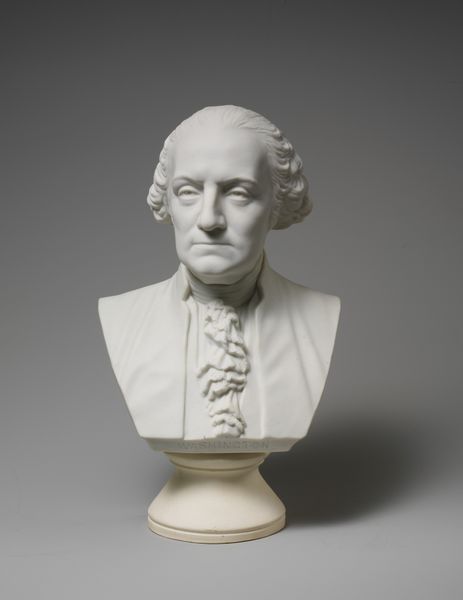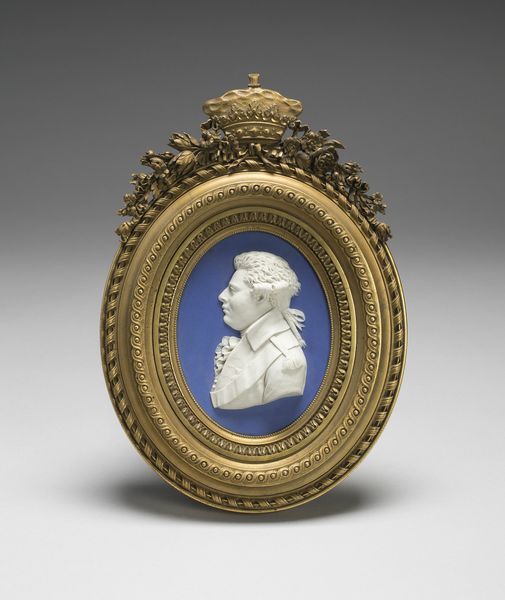
glass, sculpture
#
portrait
#
neoclacissism
#
sculptural image
#
glass
#
sculpture
#
men
#
decorative-art
#
profile
Dimensions: Framed: 4 5/16 in. (11 cm)
Copyright: Public Domain
Curator: Here we have James Tassie’s profile of John Millar, crafted around 1791. It's rendered in glass, a striking sculptural image in the neoclassical style currently residing at the Metropolitan Museum. Editor: The stark whiteness against the neutral background is immediately captivating. It's like a cameo, but bolder, more pronounced in its relief. There's a definite classical severity. Curator: Indeed. Millar was a prominent professor of law at the University of Glasgow, and Tassie's work reflects the Enlightenment's emphasis on reason and civic virtue. Profile portraits, especially in this medium, became popular as a way to commemorate and disseminate the images of influential figures. Consider its replication and distribution through casts, multiplying Millar's influence. Editor: I'm struck by how the light plays on the contours of his face and the folds of his clothing. The artist uses the reflective qualities of the glass to create a sense of depth and volume, all within this rather restrained format. Notice also the very fine concentric detail of the surrounding gilded rim and suspension loop, adding refinement. Curator: And that frame is integral. The golden surround elevates Millar, suggesting status. Remember, the late 18th century witnessed burgeoning print culture but these glass portraits served as accessible elite images. Tassie was particularly adept at catering to that demand, creating a visual culture that reinforced social hierarchies. Editor: Do you think the subtle coloring of the ground contributes something? Almost smoky. It throws the stark figure forward and draws the eye to the fine details, making the texture all the more apparent. The smooth ground is an interesting contrast. Curator: Precisely! It directs attention to the sitter's intellectual prowess rather than ostentatious display, a deliberate choice for a man of his standing. But there's a fragility here, both literal in the glass and perhaps symbolic. Millar’s liberalism challenged the prevailing aristocratic order. This memorial becomes a quiet commentary. Editor: That makes me reconsider my first impression. The starkness isn't just about classicism; it speaks to the ideals of the man and the context that informed his life. Curator: Exactly! It is a convergence of form and social commentary. Tassie encapsulates Millar in an almost deceptively simple form, belying its complex message.
Comments
No comments
Be the first to comment and join the conversation on the ultimate creative platform.
